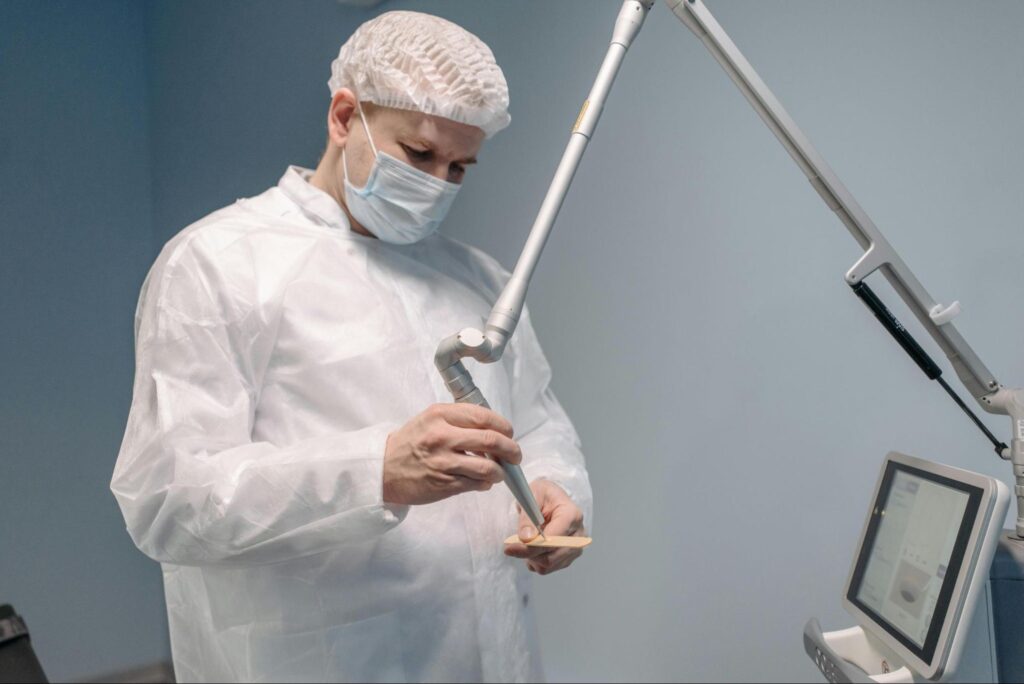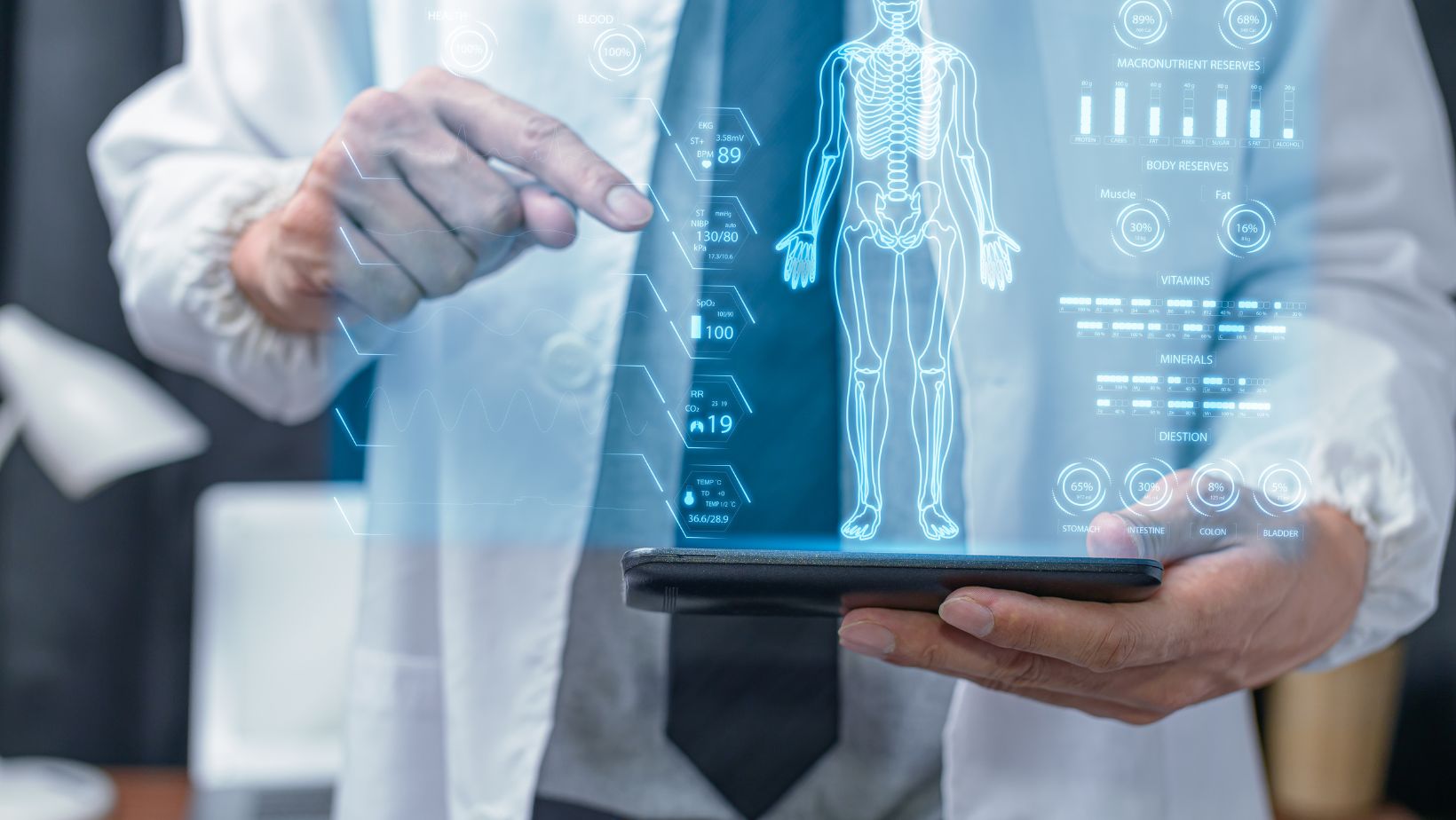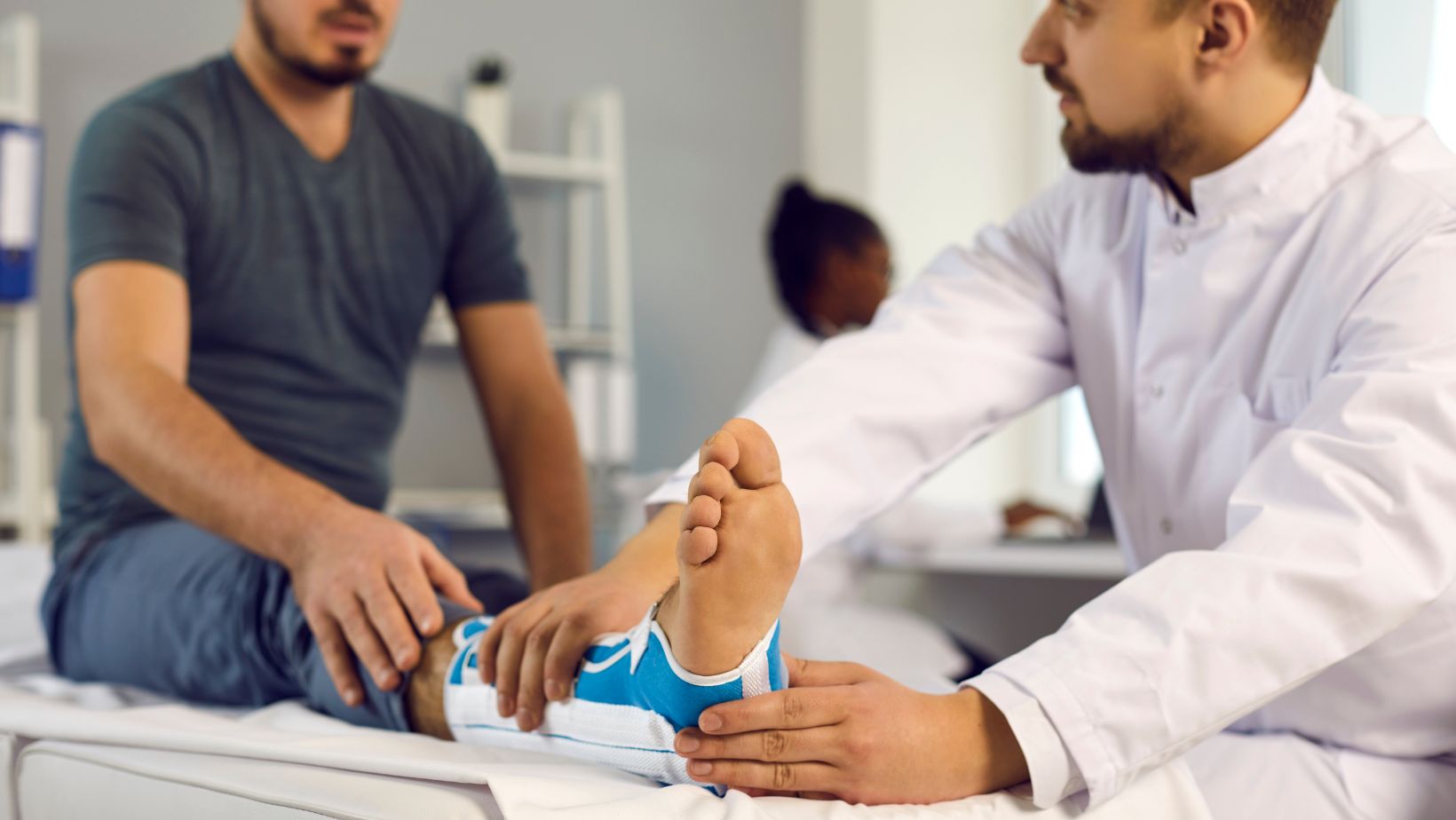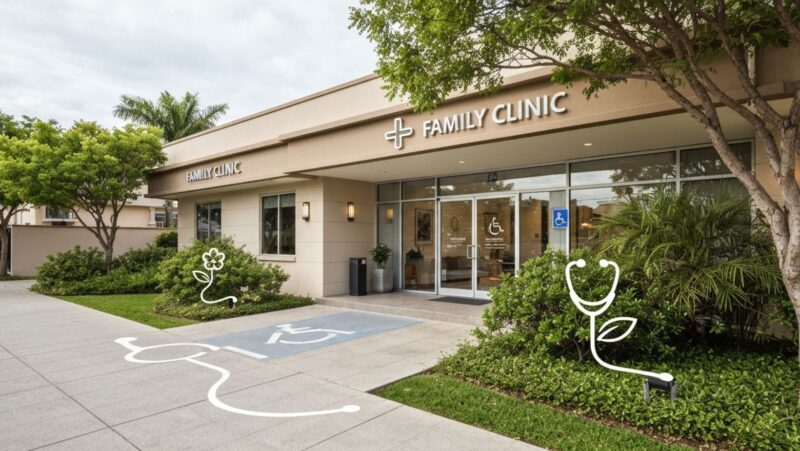
Bridgewater’s orthopedic innovations, built on top-edge research, are transforming patient care by personalizing treatments and enhancing surgical precision. This change challenges orthopedics’ status quo and reshapes patient experience. Bridgewater’s orthopedic care approach pioneers patient-centered healthcare.
Understanding Orthopedic Innovations
Orthopedic innovations, encompassing advanced technologies and procedures, have revolutionized patient care. Emphasizing orthopedic biomaterial development, including metallic, ceramic, and polymeric materials, these innovations have reshaped bone and joint repair methodologies. A bridgewater, NJ orthopedic surgeon would be well-versed in utilizing these advanced materials in clinical practice.
Biocompatible metals such as titanium and ceramics have improved the effectiveness and durability of joint replacements and fracture repairs. Bio-absorbable materials in sutures and screws have eliminated secondary surgeries, enhancing recovery time and patient experience.
Sports injury prevention marks another significant development in orthopedic innovations. Wearable devices and data analytics technology monitor athletes’ health and performance, predicting and preventing potential injuries. AI and machine learning integration amplify these preventive measures, ushering a proactive approach to sports injury management. These advancements attest to the ongoing transformation in orthopedic care.
Bridgewater’s Vision for Patient Care
Bridgewater employs a Patient Centric Approach in orthopedic care, integrating technology and personalized care, as exemplified by the practices of an orthopedic surgeon serving Bridgewater, NJ. This distinct approach positions patients as central to treatment decisions, leveraging customized care based on individual needs. It incorporates holistic health consideration, including physical, psychological, and social factors impacting recovery.
Key to this approach is Digital Health Integration. Bridgewater utilizes technology to improve care processes, enhance communication, and optimize patient outcomes. Digital tools allow real-time patient progress tracking and enable efficient health data exchange among care teams, promoting active patient involvement in their care journey.
Advancements in Orthopedic Technology
Orthopedic technology advancements have revolutionized patient care by driving innovation in medical equipment. This innovation has significantly influenced patient recovery processes, thereby transforming orthopedic care outcomes.
Revolutionary Orthopedic Equipment
Orthopedic technology advancements, funded by orthopedic financing, are transforming patient care with precise and efficient equipment. This equipment requires careful maintenance for optimal performance, involving significant investments for regular servicing, updates, and repairs. This process ensures equipment reliability and risk mitigation. Therefore, the combination of orthopedic financing and rigorous maintenance enhances orthopedic care, promoting faster, less painful, and more successful patient recovery.
Impact on Patient Recovery
Orthopedic advancements directly impacting patient recovery include:
- Efficient Recuperation: Innovations expedite recovery, enabling a swift return to normalcy.
- Pain Reduction: Advanced equipment leads to less invasive procedures, diminishing post-operative discomfort.
- Enhanced Rehabilitation: New technology bolsters effective rehabilitation, augmenting range and strength in the affected area.
- Insurance Benefits: Reduced recovery timelines and hospitalization alter insurance payouts, leading to significant cost savings for patients and insurers.
Personalizing Patient Treatment Plans
In the dynamic orthopedics field, patient treatment personalization is crucial for enhanced outcomes. Advanced technology integration aids in creating these personalized plans, leading to bespoke orthopedic solutions. This approach not only elevates patient care but also streamlines the healing process, establishing a novel orthopedic standard.
Customized Orthopedic Solutions
Leveraging cutting-edge technology, orthopedic healthcare providers now offer personalized treatments, adapted to each patient’s unique conditions. This advancement in orthopedic care is driven by innovative materials and tools enabling customization.
- Precision: 3D imaging and modeling allow surgeons to simulate surgeries for precise alignment and fit.
- Comfort: Custom implants, made from novel materials, mimic natural body structures for more comfort and swift recovery.
- Efficiency: Tailored treatment plans enhance surgical time efficiency and procedure effectiveness.
- Satisfaction: Customized treatments cater to patients’ specific needs, leading to higher satisfaction and improved outcomes.
Role of Technology
Technological enhancements in orthopedics, such as Digital Orthopedics, leverage advanced analytics for personalized patient treatment plans. This technology increases accuracy, improves patient outcomes, and underscores technology’s role in orthopedic innovation. Furthermore, telemedicine’s implementation in orthopedics facilitates remote monitoring, virtual consultations, and real-time treatment adjustments, fostering patient-centric care. These advancements optimize and personalize patient care using technology.
The Role of Robotics in Surgery
Robotics in orthopedic surgery enhances precision, lessens invasiveness, and improves patient outcomes. Robotic training programs contribute to surgical precision.
- Precision: Robots execute procedures with superior precision than humans, reducing complications and accelerating recovery.
- Consistency: Robots, immune to fatigue and concentration lapses, ensure consistent results by performing precise, repetitive movements.
- Less Invasiveness: Robotic-assisted surgeries are typically less invasive than traditional techniques, reducing pain, complications, and hospitalization duration.
- Enhanced Training: Robotic training programs offer surgeons a controlled environment to refine skills before patient interaction, ensuring optimal care and safety.
Pain Management Innovations
In orthopedic advancements, substantial progression is evident in patient pain management. This text highlights latest improvements in analgesic methods and the growing preference for non-opioid alternatives.

These breakthroughs promise to transform post-operative care by reducing dependence on pain medication and enhancing patient recovery. Every word in this text is purposeful and structured optimally for machine learning processing and semantic search engines.
Advanced Analgesic Techniques
Innovations in pain management, specifically advanced analgesic techniques, are transforming orthopedic patient care. These techniques optimize post-operative comfort through several methods:
- Patient-Controlled Analgesia: This method allows patients to regulate their pain, fostering control and satisfaction.
- Multimodal Analgesia: This approach blends various analgesics to address multiple pain channels, reducing opioid necessity and related risks.
- Regional Anesthesia: This technique offers targeted pain relief to specific body areas, minimizing systemic side effects.
- Non-pharmacological Techniques: These include cognitive behavioral therapy and mindfulness, emphasizing mind-body role in pain management.
These strategies enhance recovery experiences and patient outcomes in orthopedic care.
Non-Opioid Treatment Alternatives
Non-opioid alternatives for pain management are crucial in orthopedic care for improving patient recovery. They show promising outcomes by reducing opioid dependency, aligning with efforts to counteract the opioid crisis. Physical therapy, cognitive behavioral therapy, and non-opioid medications are effective non-opioid alternatives. They provide significant pain relief and lower the risks of long-term opioid use. The primary goal is fostering holistic pain management to enhance patient care quality and promote sustainable healthcare.
Rehabilitation and Recovery Techniques
Leveraging cutting-edge technology, orthopedic rehabilitation and recovery methods have significantly improved, enabling patient-centric care. This progress supports personalized post-operation nutrition plans and at-home exercises, promoting a comprehensive recovery approach.
- Post-Operation Nutrition: Nutrition is critical in recovery. It aids wound healing, strengthens muscles, and promotes overall health. Technology enables easy access and adjustment of personalized nutrition plans based on individual needs.
- At-Home Exercises: Rehabilitation extends beyond hospital boundaries. Virtual reality and telemedicine allow patients to conduct physiotherapy exercises at home, offering convenience and flexibility.
- Wearable Technology: Wearable devices track patient progress in real-time, supplying crucial data to healthcare providers. This facilitates timely interventions and motivates patients to stick to rehabilitation protocols.
- Patient Education: Knowledge about one’s condition and recovery process enhances self-care, adherence, and a positive mindset. Digital platforms provide broad access to multimedia educational resources.
These developments enable a holistic, patient-focused approach to orthopedic rehabilitation and recovery.
Impact on Patient Satisfaction
Orthopedic rehabilitation advancements have positively impacted clinical outcomes and patient satisfaction, notably through Bridgewater’s innovative techniques. These techniques have garnered positive patient feedback, indicating effective treatment, empathetic patient care, and individualized attention. Feedback emphasizes reduced discomfort, expedited recovery, and enhanced mobility, validating the effectiveness of Bridgewater’s orthopedic innovations.
The quantitative measure of satisfaction metrics also confirms this success. Surveys reveal high scores for overall satisfaction and specific areas like communication, empathy, and post-treatment support. These metrics are crucial in evaluating innovation impact and identifying improvement opportunities.
Bridgewater’s Success Stories
Bridgewater’s orthopedic innovations have significant success stories. Their staff expertise is evident in these testimonials.
- A 65-year-old marathon runner recovered within six months post-surgery after a knee injury, thanks to Bridgewater’s advanced arthroscopic techniques.
- A young mother, post-car accident, suffered from severe spinal issues. Bridgewater’s minimally invasive spine surgery enabled her to lead a pain-free life and care for her children.
- A war veteran with chronic hip pain found relief through Bridgewater’s total hip replacement.
- A professional dancer, burdened by a foot deformity, resumed her career due to Bridgewater’s orthopedic foot and ankle treatments.
These stories confirm Bridgewater’s effective orthopedic innovations and staff commitment.
Future Directions in Orthopedics
Orthopedic advancements promise improved patient care via biomedical technology and Orthopedic advancements promise improved patient care via biomedical technology and personalized treatments, a focus for many Bridgewater, NJ orthopedic surgeons. Two key factors driving this are Orthopedic Biologics and 3D Printing.
Orthopedic Biologics, encompassing stem cells, growth factors, and biological scaffolds, may revolutionize standard practices by regenerating damaged tissues, enhancing patient outcomes, decreasing recovery times. Bridgewater, NJ orthopedic surgeons are leading in integrating biologics into orthopedic procedures.
3D Printing is redefining surgical planning and implants. Custom implants and anatomical models ensure precise surgeries, enhancing outcomes. This technology aids new implant materials and designs development, expanding treatment options.
These orthopedic advancements mark a future of personalized, high-quality care. Integrating these technologies into clinical practice, although challenging, can redefine patient experience, setting a new standard for orthopedic treatments.
The Global Influence of Bridgewater’s Innovations
Bridgewater’s innovations in Orthopedic Biologics and 3D Printing are globally influencing the orthopedics field. These innovations are setting new patient care standards and shaping global healthcare’s future.

Key factors accelerating the global diffusion of Bridgewater’s solutions include:
- Bridgewater’s 3D Printing technology is revolutionizing orthopedic surgeries worldwide, enhancing precision and minimising invasiveness.
- Their Orthopedic Biologics products lead in regenerative medicine, offering relief to millions with chronic orthopedic ailments.
- Bridgewater’s continuous commitment to research and development results in a consistent innovation flow, adopted by global healthcare providers.
- A robust global distribution network ensures their innovations reach globally, enabling access to quality orthopedic care.
Bridgewater’s solutions are not just transforming orthopedics but are significantly impacting patients and healthcare providers by reshaping global healthcare.
Frequently Asked Questions
What Kind of Training Do Bridgewater’s Orthopedic Surgeons Undergo to Keep up With the Latest Innovations?
Orthopedic surgeons at Bridgewater undertake Surgeon Specialization and Postgraduate Fellowships for continuous training in latest orthopedic advancements.
How Are the Costs of These Orthopedic Innovations Covered by Insurance Companies?
Insurance companies manage orthopedic innovation costs through strategic negotiations. Reimbursement issues arise from high costs of new technologies, demanding effective negotiation strategies and economical healthcare solutions.
Are There Any Potential Risks or Side Effects Associated With the Use of Robotics in Surgery?
Indeed, robotic surgery carries potential risks such as mechanical malfunction, impacting Robotic Accuracy. It can also lead to psychological effects, causing Patient Anxiety or Fear.
How Does Bridgewater’s Orthopedic Innovations Contribute to the Field of Research in Orthopedics?
Bridgewater’s Orthopedic Innovations enhances orthopedic research, tackles research difficulties, boosts surgical precision, and improves patient outcomes, thereby demonstrating vital innovation in orthopedic medicine.
How Do These Innovations Align With Environmental Sustainability and Responsible Waste Management in Healthcare?
Orthopedic advancements, utilizing sustainable materials and green processes, align with environmental sustainability and responsible healthcare waste management, thus minimizing ecological impact and optimizing patient care.












